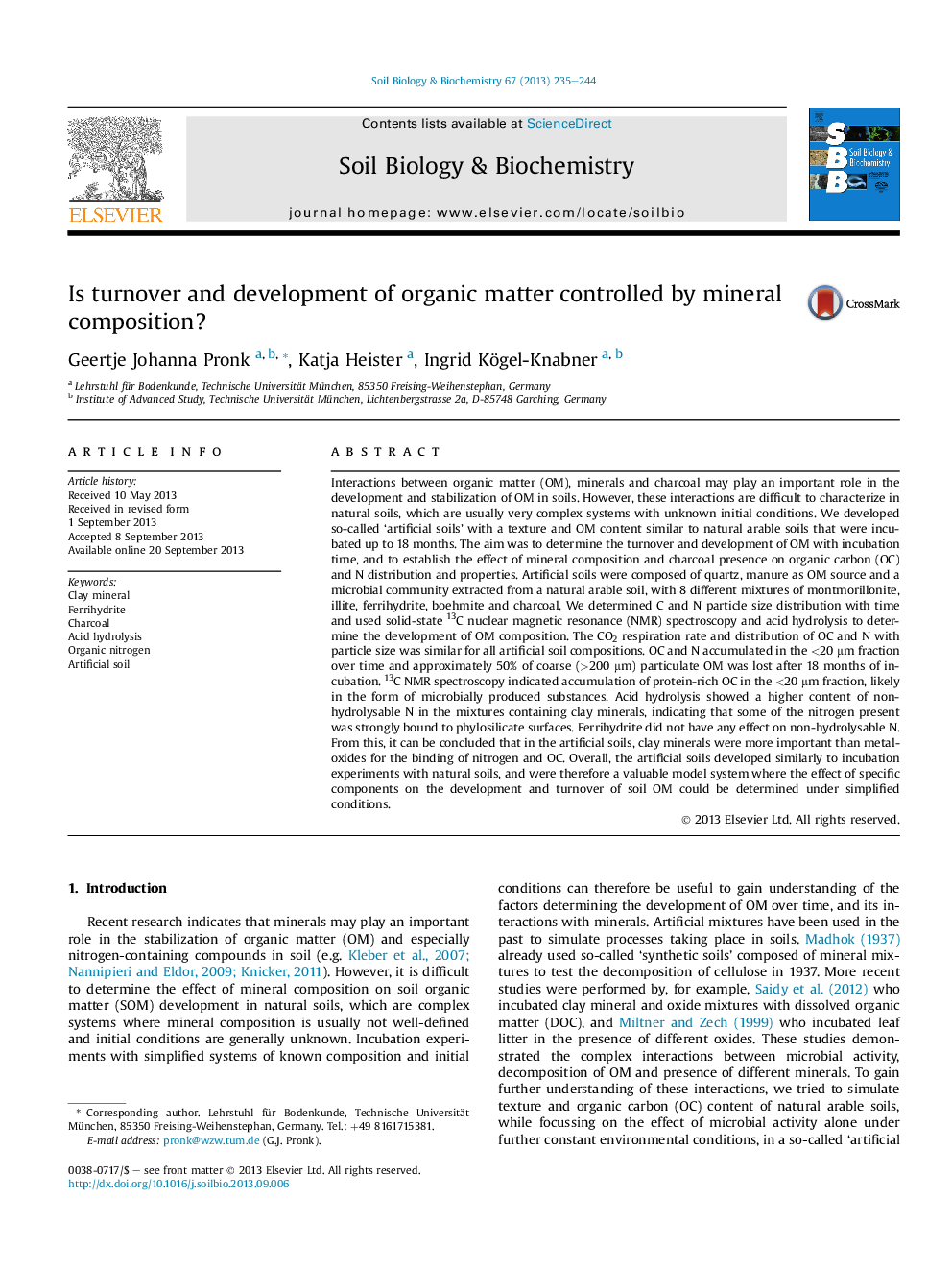| Article ID | Journal | Published Year | Pages | File Type |
|---|---|---|---|---|
| 8365125 | Soil Biology and Biochemistry | 2013 | 10 Pages |
Abstract
Interactions between organic matter (OM), minerals and charcoal may play an important role in the development and stabilization of OM in soils. However, these interactions are difficult to characterize in natural soils, which are usually very complex systems with unknown initial conditions. We developed so-called 'artificial soils' with a texture and OM content similar to natural arable soils that were incubated up to 18 months. The aim was to determine the turnover and development of OM with incubation time, and to establish the effect of mineral composition and charcoal presence on organic carbon (OC) and N distribution and properties. Artificial soils were composed of quartz, manure as OM source and a microbial community extracted from a natural arable soil, with 8 different mixtures of montmorillonite, illite, ferrihydrite, boehmite and charcoal. We determined C and N particle size distribution with time and used solid-state 13C nuclear magnetic resonance (NMR) spectroscopy and acid hydrolysis to determine the development of OM composition. The CO2 respiration rate and distribution of OC and N with particle size was similar for all artificial soil compositions. OC and N accumulated in the <20 μm fraction over time and approximately 50% of coarse (>200 μm) particulate OM was lost after 18 months of incubation. 13C NMR spectroscopy indicated accumulation of protein-rich OC in the <20 μm fraction, likely in the form of microbially produced substances. Acid hydrolysis showed a higher content of non-hydrolysable N in the mixtures containing clay minerals, indicating that some of the nitrogen present was strongly bound to phylosilicate surfaces. Ferrihydrite did not have any effect on non-hydrolysable N. From this, it can be concluded that in the artificial soils, clay minerals were more important than metal-oxides for the binding of nitrogen and OC. Overall, the artificial soils developed similarly to incubation experiments with natural soils, and were therefore a valuable model system where the effect of specific components on the development and turnover of soil OM could be determined under simplified conditions.
Related Topics
Life Sciences
Agricultural and Biological Sciences
Soil Science
Authors
Geertje Johanna Pronk, Katja Heister, Ingrid Kögel-Knabner,
